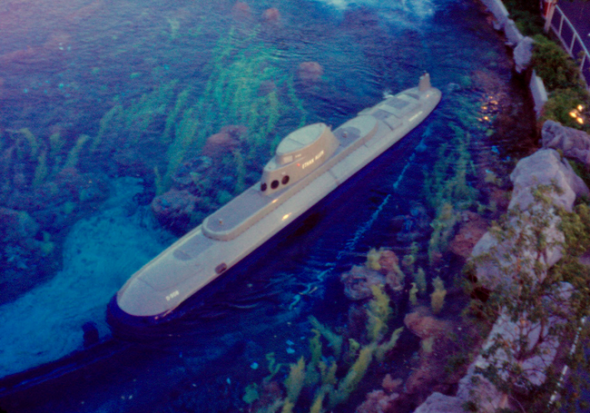Submarines surface
Submarines had first been widely used in World War I (1914 – 1918) but in the 1950s the escalating Cold War between the United States and the Soviet Union had amplified their presence in popular culture. After all, the technology had leapt forward…
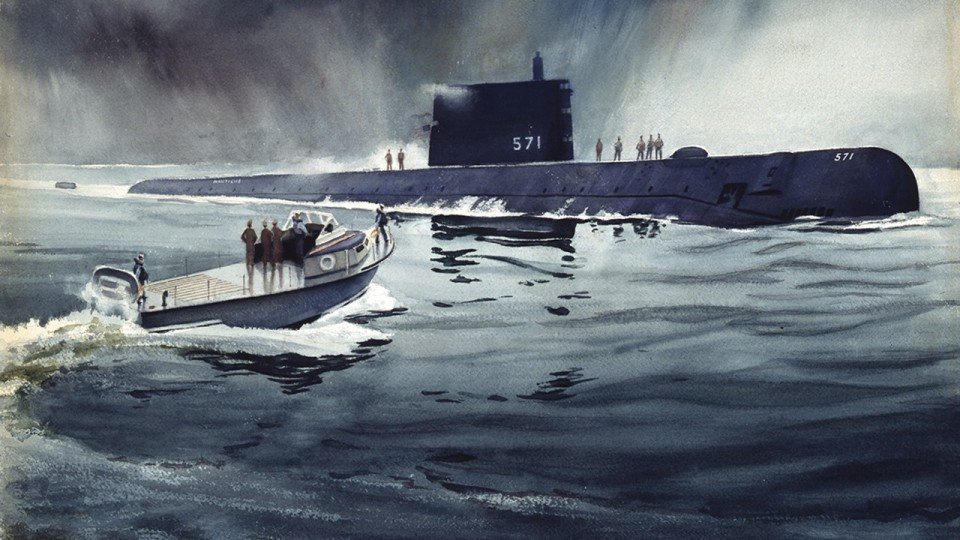
In 1954 – the same year that 20,000 Leagues Under the Sea was electrifying theaters – the United States launched the USS Nautilus (no, really!), a cutting edge submarine running on nuclear power – the first to do so. The real Nautilus could remain submerged for an unprecedented four months at a time. All the while, the Soviet Union retaliated by building its own arsenal of nuclear subs as part of the ongoing arms race between the two world powers.
In a 1958 show of power, the USS Nautilus successfully (and secretly) sailed below the polar ice caps becoming the first ship to ever cross the geographic North Pole. That made the real Nautilus an international headline; a living, breathing example of future technologies giving humans the power to explore our world as never before…
Views of tomorrow from sea & sky (1959)
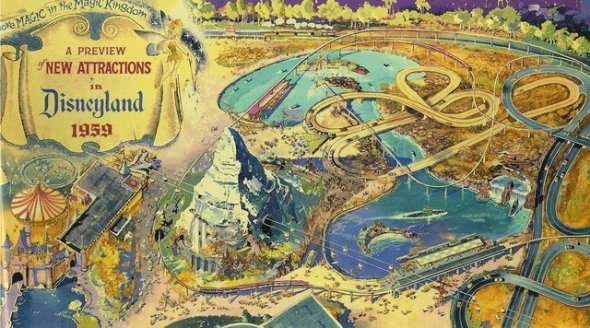
Imagine what “tomorrow” looked like for audiences of the 1950s… Escalating tensions between the United States and the Soviet Union had rallied both nations behind the power of innovation. Whether toward the seas or space, the race was on to go farther, deeper, and faster. The rapid increase in innovation also gave Walt his long-awaited chance to reimagine Tomorrowland.
Disneyland’s first – and certainly largest – expansion occurred in 1959. So grand was the scale of this expansion that it was televised as a reopening of Disneyland. In a growth spurt of unprecedented scale, three new attractions were introduced simultaneously, each earning the newly invented “E-Ticket” designation (meaning that they required the most limited and expensive ride coupon to experience).
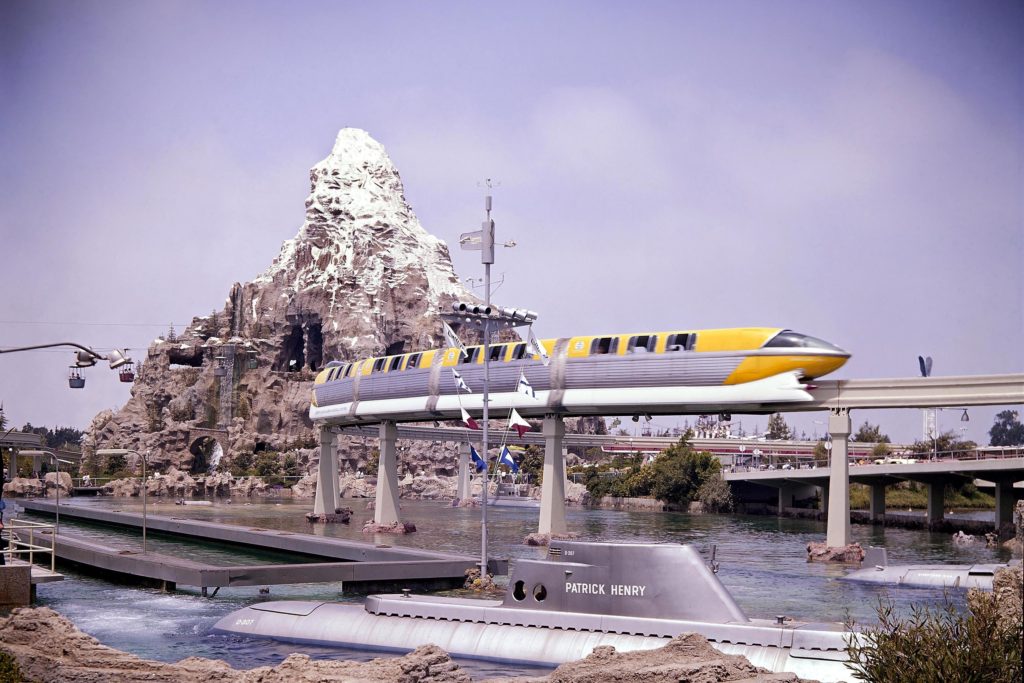
On June 14, 1959, Tomorrowland became home to the thrilling Matterhorn Bobsleds (the first tubular steel tracked roller coaster ever), the sleek Disneyland ALWEG Monorail (the first monorail in the United States), and, in a bubbling lagoon of waterfalls and glassy water, the Cold War gray submersibles of the Submarine Voyage. In that way – more than a decade before and a thousand miles away from where Magic Kingdom’s masterpiece would even surface – the first Submarine Voyage set sail.
Submarine Voyage (1959)
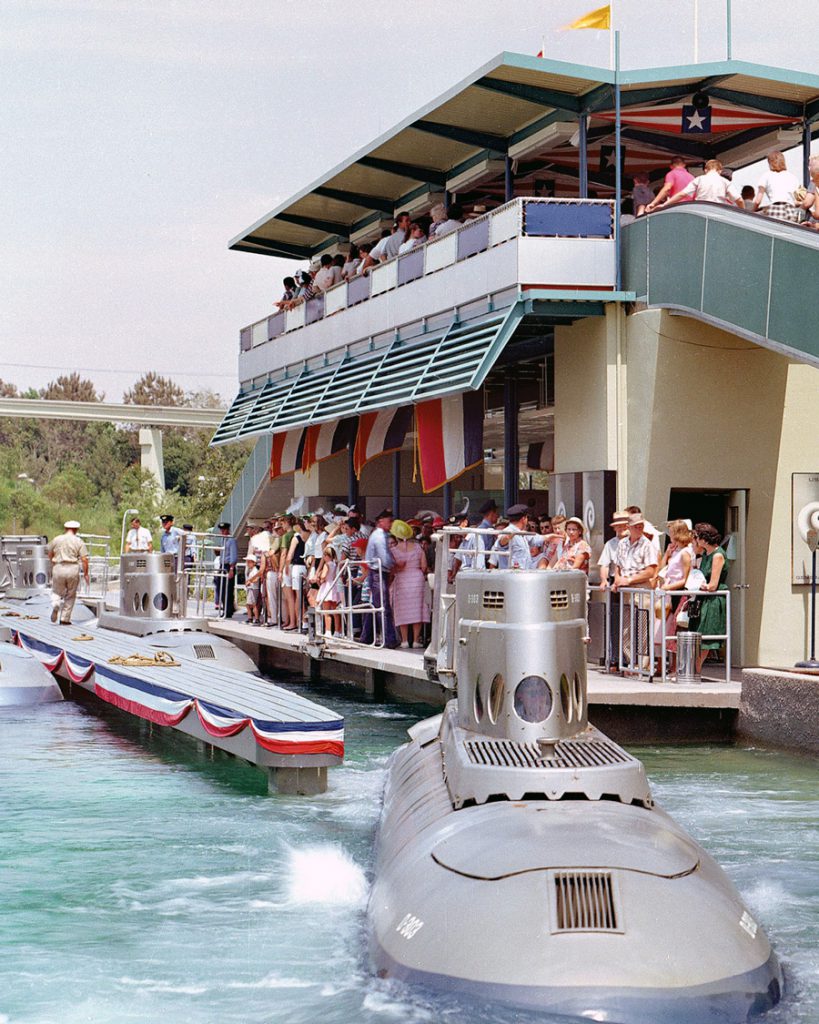
So Disneyland’s Submarine Voyage opened June 14, 1959 as part of the largest expansion in the park’s history. But Walt seemed to think it was only bringing Tomorrowland to the standard it should’ve met all along.
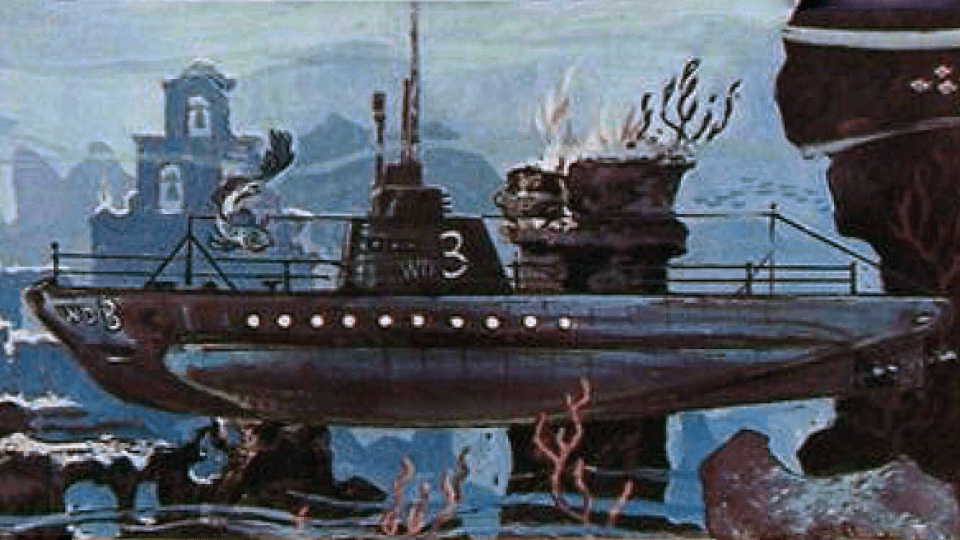
Each of the eight Cold War industrial-style submarines held 38 guests and cost a whopping $80,000 to build in 1959 (that’s about $660,000 each today). Walt, for his part, was simply delighted by the attraction. He often joked that he had “one of the world’s largest peacetime submarine fleets,” and reportedly was disappointed when Soviet Premier Nikita Khrushchev was denied permission to visit Disneyland that year, as he’d looked forward to showing off his submarines.
The brilliant attraction was a pinnacle of Imagineering prowess… and of sleight of hand. Between you and me, the “submarines” weren’t submarines at all. Rather, they’re simply boats that travel along a flat track with visitors seated below the water line looking out of porthole windows.
As the subs pressed forward from the loading dock, bubble screens would simulate downward movement and diving just as coral reefs came into view.
Similarly, another screen of bubbles and an overhead waterfall would mask the sub’s entrance into a showbuilding where classic dark ride lighting techniques and effects could simulate ever-deeper oceanic environments of sunken cities, shipwrecks, mermaids, and even an encounter with a goofy sea serpent.
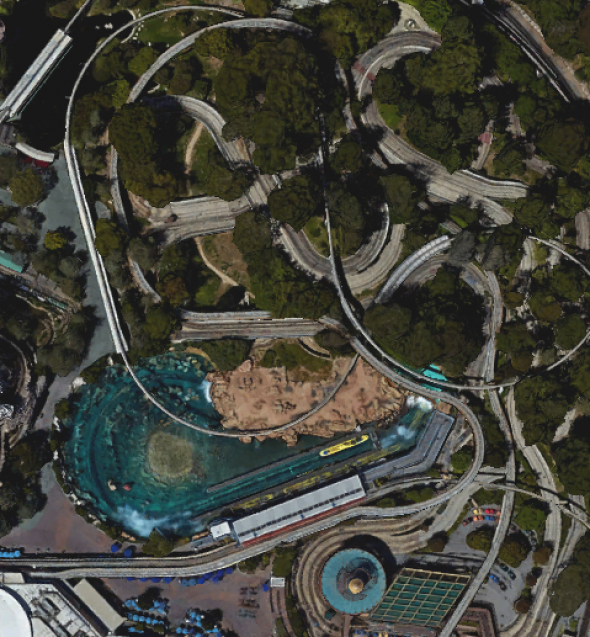
The massive soundstage containing those scenes (which, as it happens, remains one of the largest attraction showbuildings ever constructed) wasn’t put to waste. Instead, grass and trees were planted on top so that the building’s roof could also play host to the park’s expanding Autopia ride with the co-debuting Monorail’s support beams built right in. Later, the Submarine Voyage showbuilding would also serve as fountain for the aerial highways of the Lost Legend: The PeopleMover!
Submarine Voyage opened in 1959. The 20,000 Leagues Under the Sea walkthrough didn’t close until 1966. So for the better part of a decade, the two “submarine” themed attractions co-existed in Tomorrowland, one as a scientific journey promoting submarines as the stuff of tomorrow, and the other as a fantastic walkthrough of a famous literary and cinematic submarine.
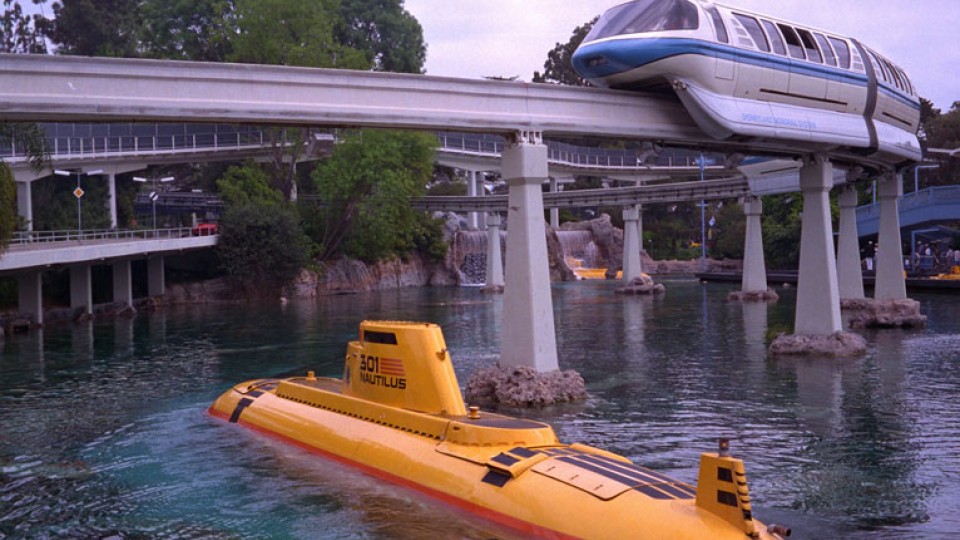
Submarine Voyage remained a guest favorite as the decades passed, even as the park (and pop culture) changed around it. For example, in 1986, the subs’ hulls were repainted from the militaristic gray to a pastel, then bright, yellow, recasting the vehicles as research submarines (more appropriate for a post-Cold-War audience).
But for decades, much about the ride did not change! Packed with detailed scenery, animatronic creatures, and gorgeous views of brilliant dark ride scenes, Submarine Voyage was a certifiable E-Ticket and an absolutely stunning Disney classic. That also made it a prime candidate for duplication at Walt Disney World.
New perspective
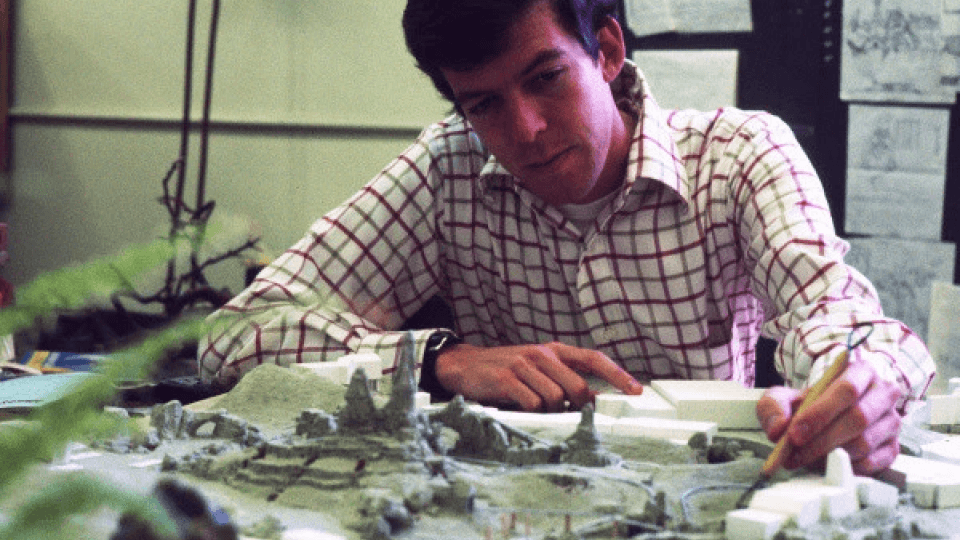
In the 1960s, Imagineering had expanded their footprint in Glendale, California to prepare for the massive influx of engineering projects they’d encounter in building Walt Disney World. They’d also brought on a new group of young Imagineers fresh from school.
Perhaps the most well known of that “class” of designers is Tony Baxter, whose story is of particular interest for many “armchair Imagineers.” Baxter famously worked at Disneyland (first as an ice cream scoop, then a ride operator on the Submarine Voyage!) before being invited to Glendale after a few of his school projects caught the eye of Imagineers.

The result? The artist went from operating Disneyland’s Submarine Voyage to working with the legendary Claude Coats to design Magic Kingdom’s version. And Baxter’s new perspective would be essential since the Walt Disney World installation of the submarine ride was going to get a major reimagining… Read on…



